“We spend a month on the sound and five minutes on the chord changes”: Remarkable classic interview with Kraftwerk reveals how the band created their iconic electronic tunes, and what really went on in their mythical Kling Klang studio
If you like don't like having your music myths busted, you might not want to read this…
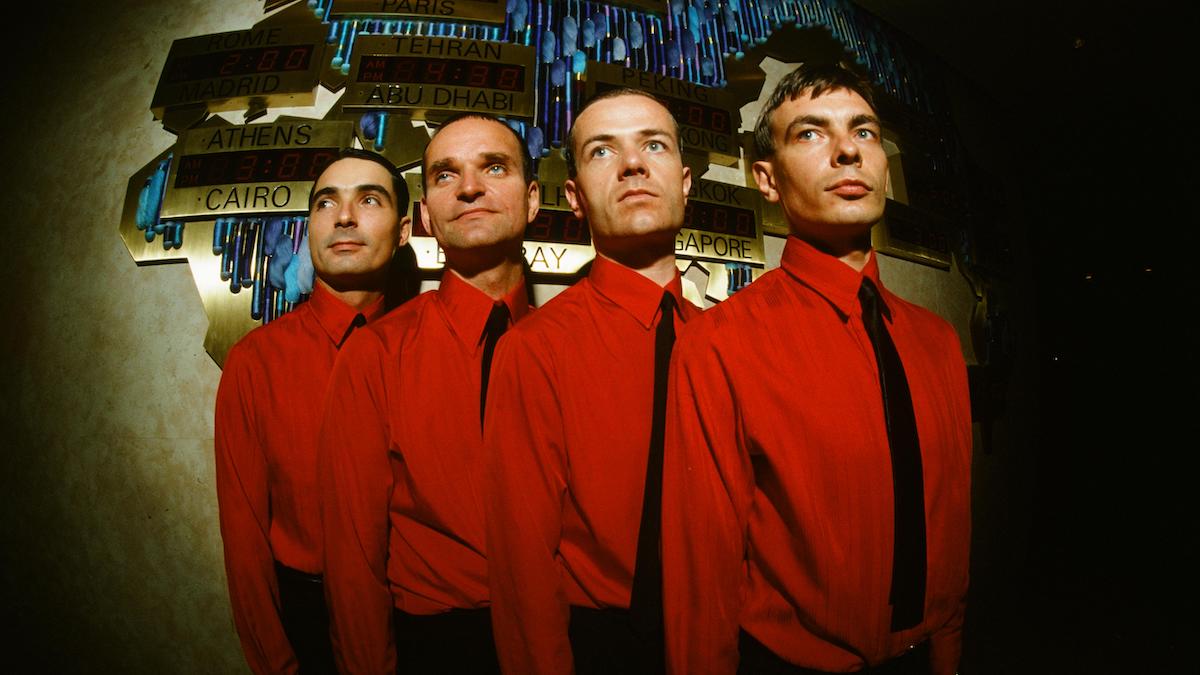
"Mysterious", "legendary", "mythical", and "iconic" – all words bandied around whenever you mention Kraftwerk and their Kling Klang recording studio. And theirs is a story that has grown in stature and mystery over the years, largely because the band has kept its collected mouth shut on what goes on in that studio, and about the creation of their records.
But back in 1981, as an almost-forgotten interview reveals, they weren't so reticent, and largely spilled the beans on everything they did. So, if you don't want your Kraftwerk myths exposed, and the secrets of the most important band in electronic music revealed, we suggest you might want to scroll somewhere else, right now…
Remarkably, 2024 marks the 50th year since the release of Kraftwerk’s Autobahn, the album and nearly 23-minute long track that introduced electronic music to the world (or, at the very least, the world’s pop charts).
The track was a hit, albeit in edited form, on both sides of the Atlantic, and paved the way for a string of Kraftwerk releases that, if you believe the hype, created dance music, launched genres and shaped the very history of recorded music.
There's Kraftwerk: The Robots…
Kraftwerk: the Komputer users…
And how could we forget Kraftwerk: The Models?
Get the MusicRadar Newsletter
Want all the hottest music and gear news, reviews, deals, features and more, direct to your inbox? Sign up here.
Kraftwerk have consequently become electronic music icons and are seen as the pioneers of this futuristic sound, not that they would admit it themselves. You see, Kraftwerk don’t like to talk about it – or anything else, come to think of it.
Interviews with the band over the last five decades are so rare that that the mystique and intrigue about them and their legendary Kling Klang Studios has only grown further.
Interviews with the band over the last five decades are so rare that the mystique and intrigue about the band and their legendary Kling Klang Studios have only grown further.
As the band’s new releases trickled to virtually zero, so did the words that go with them, to the point that Kraftwerk are now just a touring operation playing the hits while doing who knows what on stage.
And you get the feeling that this really is it, for both new music and new interviews. They’ve said all they need to – mostly in the form of music – and no new sounds could possibly emerge, nor add any further weight to a catalogue so revered by electronic music lovers.
Which only makes long lost interviews with the band even more exciting, especially when they contain details of the fabled Kling Klang studio and, in the case of a 1981 chat with Kraftwerk's main man Ralf Hütter, an extraordinary level of detail about the gear they used on stage.
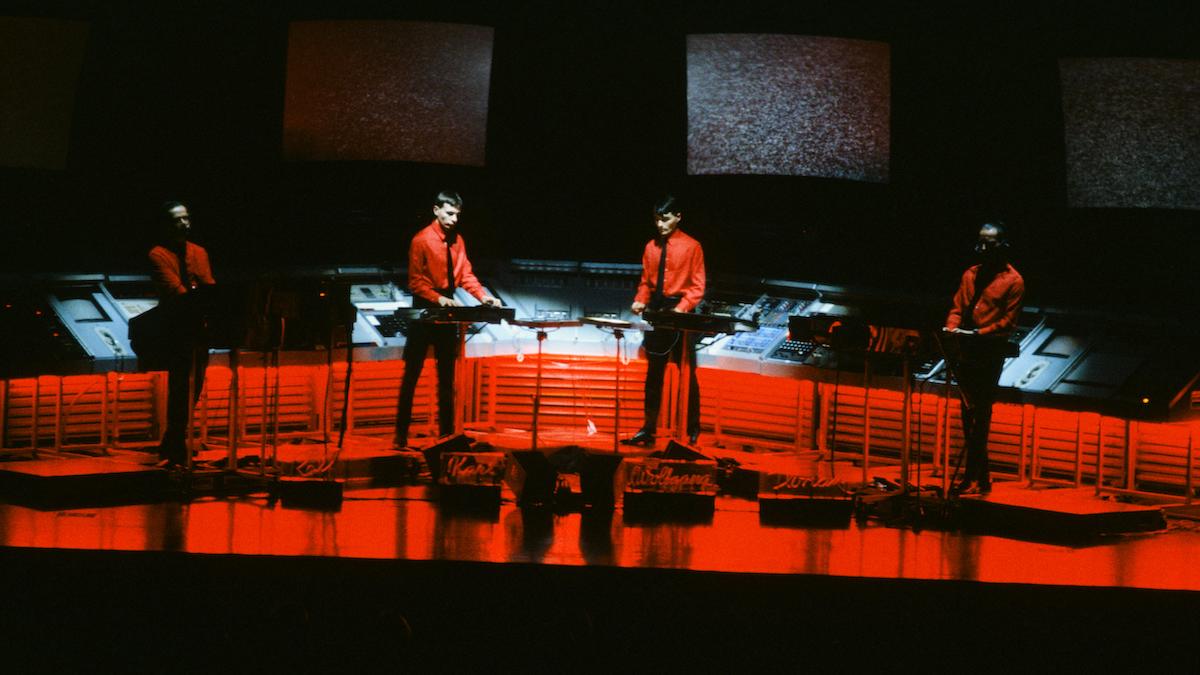
The interview, unearthed in the September 1981 issue of a magazine called Electronics & Music Maker, is astonishing on many levels, not least because of the efforts of journalist Mike Beecher, who got more words out of Hütter than he has uttered in the 40-odd years since.
Best of all is the fact that this revelatory interview appeared in what was essentially an electronic hobbyist magazine.
It's also an astonishing piece because it lists the gear the band used on stage, and all alongside a handy annotated diagram.
Best of all, though, is the fact that this revelatory interview with a German band who would go on to become as iconic as they are secretive, appeared in what was essentially an electronic hobbyist magazine. A classic Kraftwerk ploy, if you think about it.
Kraftwerk don’t even make full cover stars in the magazine, having to share second billing behind some DIY lighting and sound projects, although we love the font used for the ‘Kraftwerk Revealed’ headline. Very 1981.
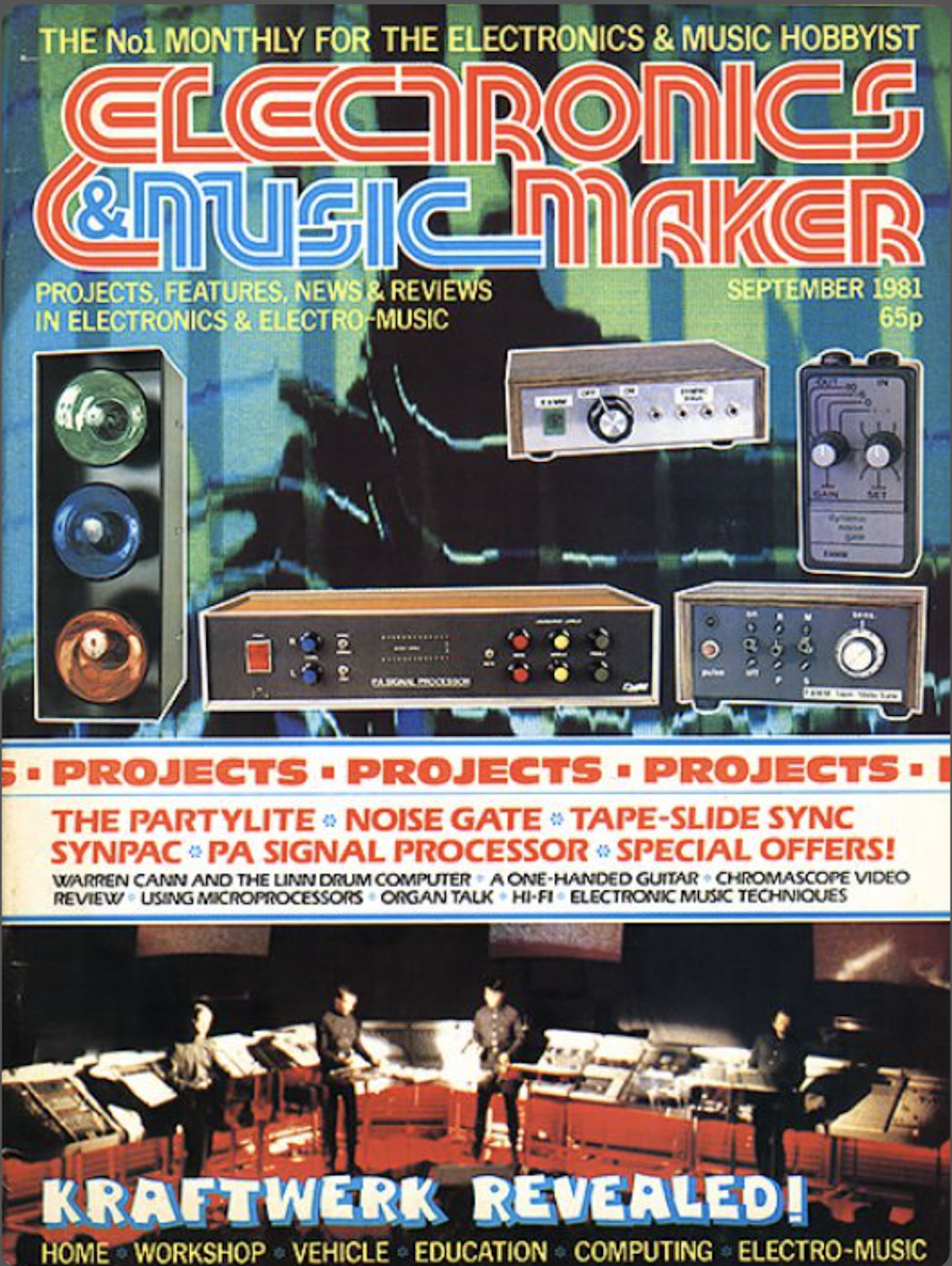
Anyway, to the interview itself, and there’s plenty about the legendary Kling Klang studios, which has since become a mythical place of music making. And if you don’t want that myth busted, now is that time to click elsewhere.
“The studio was, in fact, just an empty room in a workshop premises that was a part of an industrial area in Dusseldorf.”
Ralf Hütter, Kraftwerk
First up, as it turns out, the studio was in a pretty run down industrial complex just off an unremarkable street in Dusseldorf.
"We started off Kling Klang studio in 1970, which really marked the beginning of Kraftwerk,” Hütter said of the studio he created with the other Kraftwerk founder, Florian Schneider. “The studio was, in fact, just an empty room in a workshop premises that was a part of an industrial area in Dusseldorf.”
Right now we can hear the sighs of every Kraftwerk fan around the world who believed – as, we admit, we also did – that the studio was some kind of gear mecca, full to the brim with as yet not invented space-age technology, probably even AI music production gizmos, even more probably created by aliens.
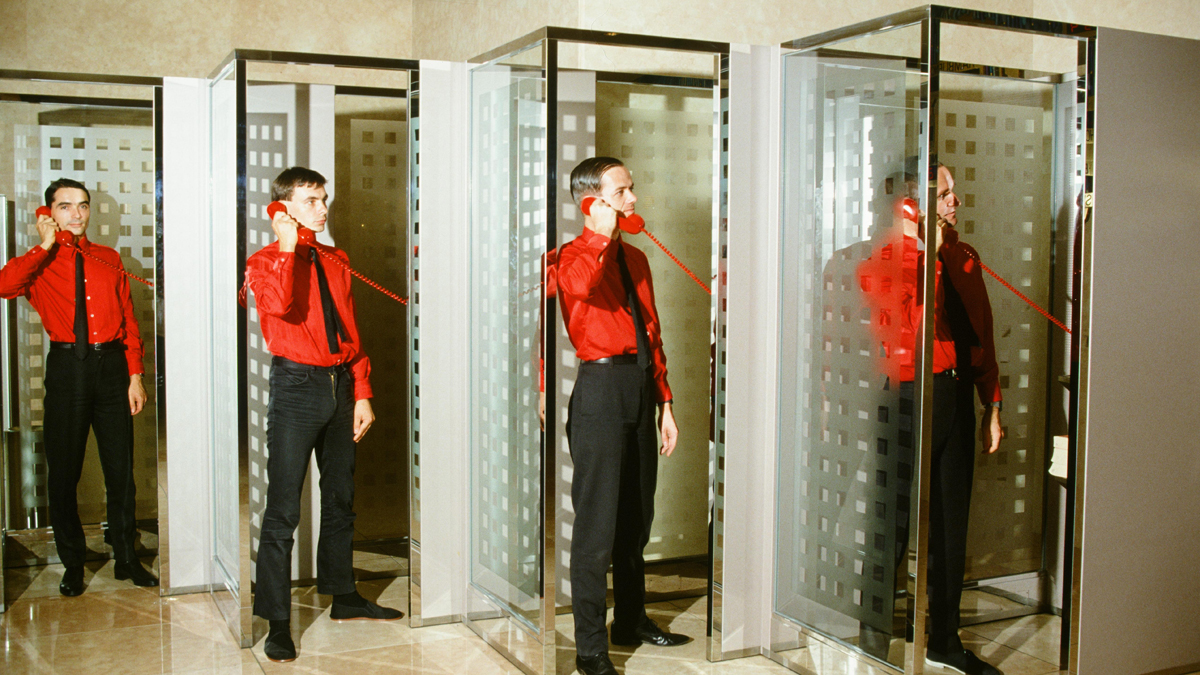
“We fitted sound isolation material into the 60sq metre room,” Hütter added, popping the balloon of all of those gear fantasies as he described the mundane process of fitting out the room. We also like to think that maybe he would occasionally put the kettle on in a small kitchenette area, taking a tea break between fittings. Maybe Florian would swing by with biscuits and they’d choose a colour for the walls.
"Commercial synthesizers came fairly late into Germany, and it was not until the third album that we started to use them."
Ralf Hütter, Kraftwerk
Still, one story that has also since done the rounds – that the band made a lot of their own music gear – was confirmed in the interview: “We now use other adjoining rooms where we make instruments,” Hütter said, before explaining how the band’s first three albums leading up to Autobahn were created with a very DIY ethos.
And these first three Kraftwerk albums were very different to later releases, with no electronic sounds, simply down to the fact that synths were hard to come by at the time of their recording.
"Commercial synthesizers came fairly late into Germany,” Hütter explained, “and it was not until the third album that we started to use them. By that time, Wolfgang Flur had joined us to play a custom built drum system and was our first percussion player to accept electronically produced drums.”
The fourth member of the classic Kraftwerk lineup, Karl Bartos, joined a year later, and as Ralf explained, they set about building gear for both studio and live use.
"Our daily schedule of work lasts some 8-10 hours in the studio. We don't regard ourselves just as musicians but as Musik-Arbeiter (musical workers), and we designed and built up our complete portable studio set that includes the stage backdrops, curtains, lighting, frames, staging and stereo PA system as well as the instrument equipment stands.”
Much of the rest of this classic interview concerns itself with the gear the band created for the 1981 tour of their album Computer World, which E&MM magazine took some delight in revealing with an annotated picture.
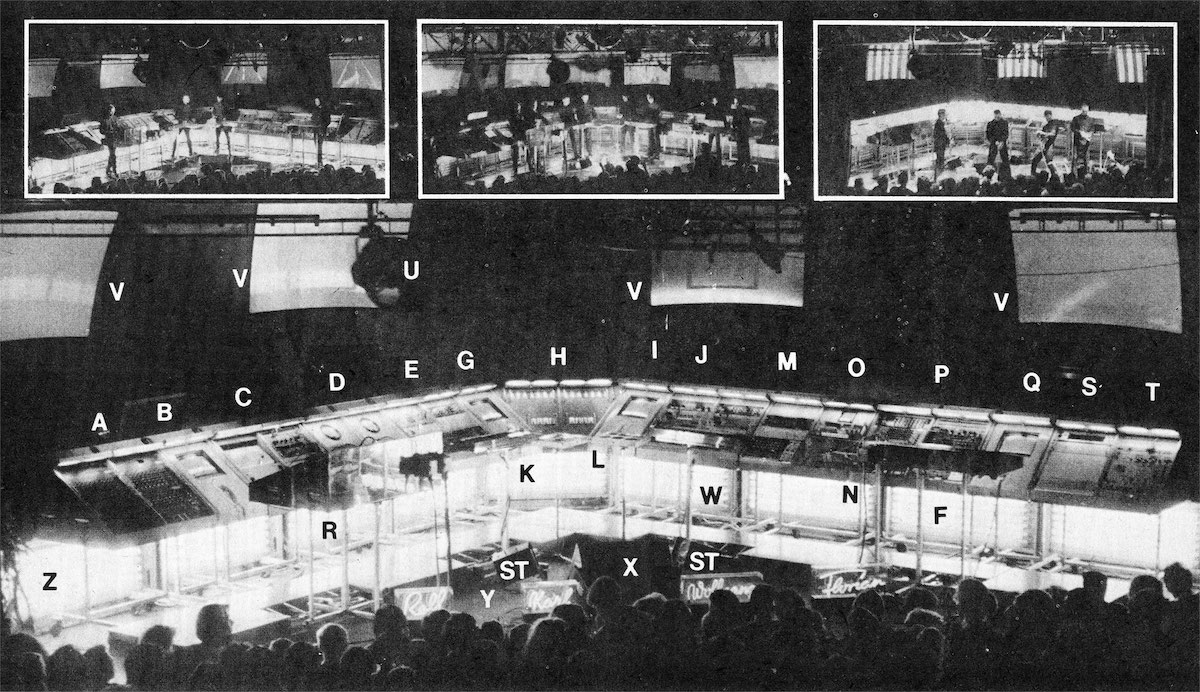
We'll give you the highlights of what some of the letters stand for:
- A: 2x 64 step sequencers
- B: "Ralf's TV monitor and telephone communication to engineers"
- C: Roland Micro-Composer
- D: Eventide Digital Delay and Flanger
- F: "Prophet polyphonic synthesizer" (we're guessing a Prophet-V as it has that shape and would have been around then)
- J : Custom-built drum consoles
- K: Korg PS-3300 polyphonic synth (only 25 ever made, current value around $70k!)
- L: Syndrum unit
- M: "More equalisers including parametric types, filters, mixer rack, Eventide Harmoniser and Digital Delay, and Limiter/compressors."
- T: EMS Vocoder
So you see, no alien tech in site, nor any 1980s AI. The interview also revealed that during part of the 1981 concert, the band played miniature instruments along to the track Pocket Calculator, and that these were bought off the shelf at a local department store (one looks like a mini Bontempi or Stylophone to us).

However, as extraordinary as all of these gear revelations were, the best quotes from the interview were given by Ralf as he explained the band’s compositional process.
“We started to become automatic and 'robotic' ourselves - new pieces were written in 5-10 minutes. One evening in a discotheque I wrote Showroom Dummies like that,” he said on the process of coming up with one track from the album Trans-Europe Express.
Hütter then revealed more about how the then latest album Computer World was created: “We aim to create a total sound, not to make music in the traditional sense with complex harmony. A minimalistic approach is more important for us. We spend a month on the sound and five minutes on the chord changes!”
"A minimalistic approach is more important for us. We spend a month on the sound and five minutes on the chord changes!”
Ralf Hütter, Kraftwerk
So there we have it, the interview that busts the Kraftwerk myths. Or, hang on a minute, doesn't it just create some more? They wrote classic Kraftwerk songs in just 5-10 minutes, took their entire studio out on tour with them, used one of only 25 Korg synths ever made on stage, and actually thought they'd become robots?
Oh well - in trying to bust the myth, we've probably added more fuel to the bizarre Kraftwerk story fire. Either way, here's to the next 50 years, after which we can pretty much guarantee that Kraftwerk will be actual robots on stage performing the hits.
Thanks as ever to the wonderful Muzines, whose mission is to restore, compile and keep these classic interviews for future generations of gear geeks.


Andy has been writing about music production and technology for 30 years having started out on Music Technology magazine back in 1992. He has edited the magazines Future Music, Keyboard Review, MusicTech and Computer Music, which he helped launch back in 1998. He owns way too many synthesizers.
“Excels at unique modulated timbres, atonal drones and microtonal sequences that reinvent themselves each time you dare to touch the synth”: Soma Laboratories Lyra-4 review
e-instruments’ Slower is the laidback software instrument that could put your music on the fast track to success










